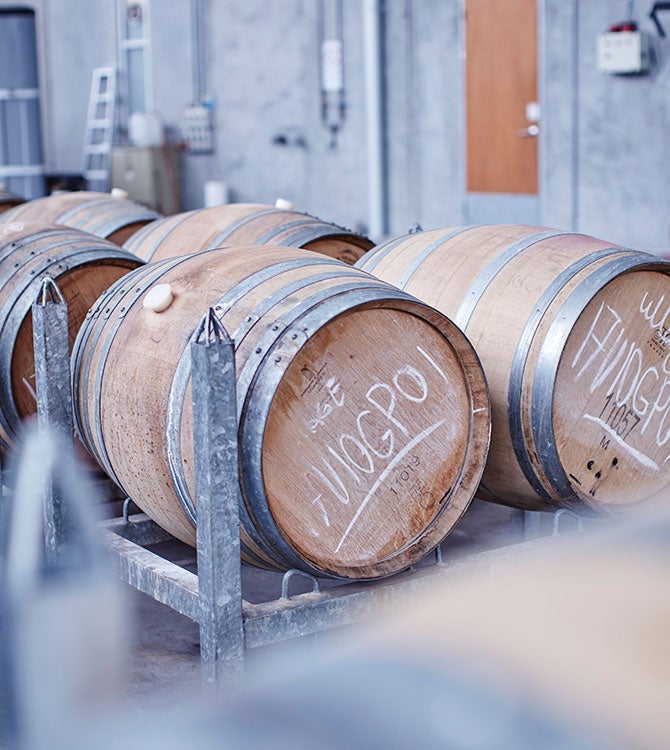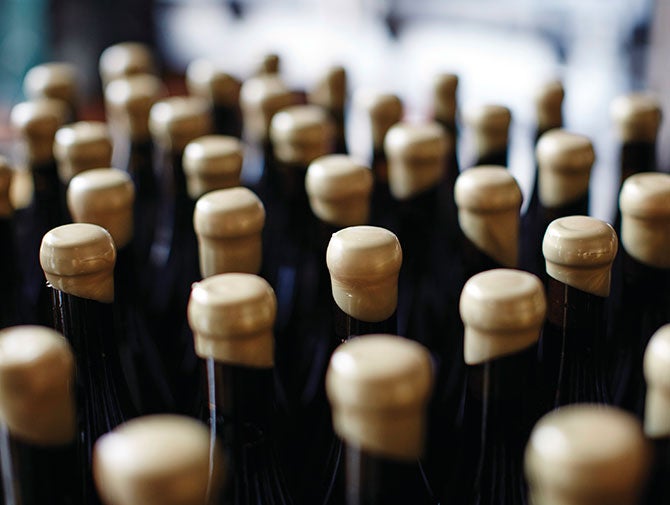Have you ever encountered a wine that looked faded in colour, smelled musty or tasted a bit vinegary? Wine is a living thing, and sometimes faults occur, whether it’s during winemaking or after the wine has been bottled. So how do you know when the wine is flawed and what should you do?
Firstly, keep in mind that some wine faults are less common these days, thanks to careful winemaking, screw cap closures, better-quality corks, and temperature-controlled storage and transport. Award-winning Sydney-based sommelier Bhatia Dheeraj, who’s headed up wine programs and teams in some of the world’s best restaurants, says on average he encounters one faulty wine a month.
“There’s been a lot of improvement over the last three to five years, and the number of faulty bottles I see has definitely decreased,” he says.
But there are a lot of factors that can lead to wine faults, and some winemaking techniques, such as minimal-intervention approaches that use no or few additives, can produce wines that are less stable.
So here’s how you can tell when a wine is flawed and what to do about it.
How do you know if a wine is faulty?
A wine is faulty when it has ‘off’ aromas or flavours, which can be caused by a range of different factors. Faults can be more common in wines sealed under cork and in older, more complex wines, but they can exist in all types of bottles including with a screw cap.
In a restaurant, your chance to assess a wine is when the sommelier or waiter pours a small taste. And let’s clear this up: “The point is not to see if you like the wine or want to keep drinking it,” says Bhatia. “The whole idea of offering a little sip is to check the condition of the wine. It’s also an opportunity to assess the temperature of the wine and the glassware.”
Learn how to serve wine like an expert, including the ideal temperatures for different wines.
What should you do if you think your wine is flawed?
Bhatia suggests discussing it with the sommelier or waiter first, rather than immediately rejecting the wine.
“Be bold and speak up,” he says. “But it’s always good to have a second opinion because it might not be a fault; it could be the glass or something else.”
If you’re at a good restaurant, trust your sommelier – they are usually highly trained and can tell you if the wine is faulty or if there’s another issue at play. If you’ve opened a store-bought bottle that you think is faulty, return it for a refund or replacement.
Not sure if your wine has gone bad? Here are some common wine faults and how to identify them.
Cork taint
When a wine is ‘corked’, it means the wine has come into contact with a chemical known as 2,4,6-trichloroanisole, or TCA. TCA usually comes from the cork in a bottle but is also found in the winery, in things like wooden crates and packing material. The wine may smell or taste dank, like wet cardboard, musty newspapers, mushrooms or a mouldy basement.
“There’s a spectrum from just a tiny bit of cork taint to really corked,” says Liinaa Berry, an Adelaide Hills–based sommelier and wine writer. “If you don’t know what corked wine smells like, you can often pick up that the fruit in the wine isn’t very expressive and the wine isn’t very aromatic.”
Oxidation
When wine encounters oxygen it starts to break down, and too much oxygen will spoil it. This can happen during the winemaking process or in the bottle. Oxidised wine loses its fruity aromas and becomes flat in taste. It also appears flatter in colour, with red wines turning a brown-brick colour and white wines turning golden.
Brettanomyces (Brett)
This is a type of yeast found in wineries that can grow in wine and produce bad-smelling compounds. Brett is present in many wines but generally only becomes a problem at high concentrations. You can recognise Brett from its mousy, barnyard or rotten-meat aromas.
“If you have a ‘Bretty’ wine, it doesn’t mean the whole barrel is Bretty – it might’ve just developed in one single bottle,” says Liinaa.
Lightstrike
Bright light can severely impact wine. White and rosé wines stored in colourless glass bottles and exposed to light can develop aromas of old potatoes, cardboard and cabbage.
Volatile acid (VA)
This is what gives vinegar its acidic flavour and it exists naturally in wine. It’s not a problem in smaller quantities, but if the bacteria that produces VA gets out of control, the wine will smell of nail-polish remover.
Second fermentation
Allowing a second fermentation to occur in the bottle is how sparkling wine is traditionally made, but it’s a flaw in most still wines. You’ll recognise it from the tiny bubbles and sometimes a flavour that’s slightly off.
“Every bottle of wine is a microcosm; there’s a different world within each one,” says Liinaa.
Want to know more?
Download ‘Introduction to wine: the ultimate guide’ and learn all about the basics of wine, including how it’s made, how to taste and serve it, common faults, and Australia’s top wine styles and regions.






